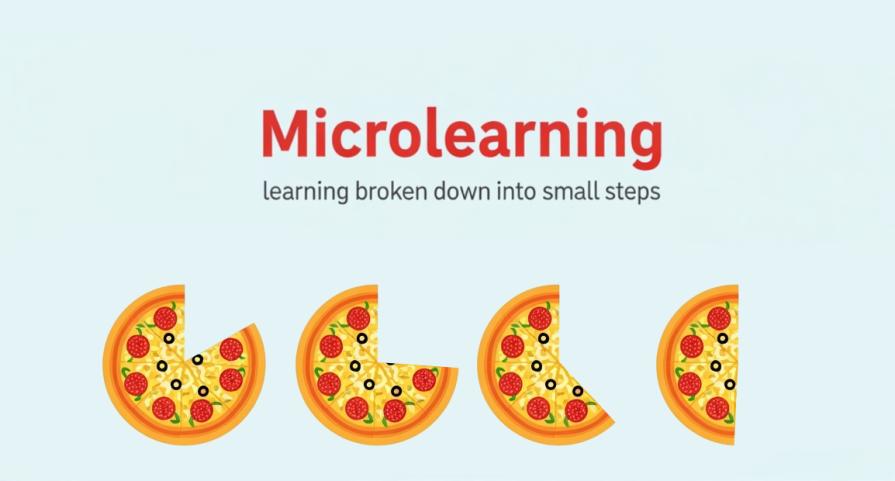Why short lessons are gaining popularity, what are their strengths and weaknesses — and who should really pay attention to them
If you look into a search engine for microlearning, which is fashionable now, you can easily drown in the same headlines and promising slogans. Everywhere the picture is the same: Ebbinghaus's forgetting curve, the promise to hold attention for 15 minutes a day, and the assurance that this is the future of education. But what is behind this concept? How justified are advertising statements and is it really worth building studying on short videos and quick tests?

How microlearning works and why is there such an interest in it
In fact , microlearning is the presentation of information in small, easily digestible portions. Most often in the format of short videos, mini-lectures, or interactive texts. Although such formats have long been firmly established in life — suffice it to recall YouTube shorts, TikTok videos, or educational posts on social networks — not everything that flashes in the feed can be called learning in the usual sense.
A key feature of microlearning is repeatability. This is based on an old study by the German psychologist Hermann Ebbinghaus, who noted back in the XIX century: a person quickly forgets new information if he does not return to it with a certain periodicity. Repetition helps to reduce the rate of forgetting and consolidate knowledge in memory. This effect was later confirmed by other experiments. In practice, this means that a short video or mini-lesson on its own will be of little use unless it is followed by a reinforcing quiz or a reminder to return to the topic in a few days. Therefore, modern micro-learning courses are always developed according to the scheme: a short lesson, a test or a task, and then a systematic repetition.
Why has microlearning become so popular?
In recent years, the interest in microformats can be explained simply: the amount of information around is growing rapidly, attention is crumbling, and it is becoming more and more difficult to maintain concentration for a long time. The term "clip thinking" describes this feature of modern perception: when attention clings to vivid images, and long texts or lectures cause irritation.
It's no wonder that more and more platforms and apps are offering studying in small chunks. There are even special educational "nuggets" — mini-lessons with a short explanation, a verification test, or an interactive task. Formats range from two-minute videos to newsletters with questions of the day, which must be answered on the way to work or in between tasks.

Where microlearning really works
This approach is most popular in corporate studying.
- For example, the Walmart chain has introduced mandatory two- to five-minute videos for employees. The topics relate to security, working with cash registers, communicating with customers, and after watching - a test. According to internal statistics, such sessions not only increased productivity, but also reduced the number of accidents in the workplace.
- Google has implemented the Whisper Courses project, a five-minute studying module aimed at developing soft skills and improving team interaction. After 10 weeks, participants in the program showed tens of a percent increase in performance rates compared to those who did not participate!
- In the hotel business, InterContinental Hotels Group used micro-courses to onboard new employees. The result was quite concrete: the adaptation period was reduced from five weeks to two.
Problems and limitations of the format
For all the attractiveness of microlearning, the format also has tangible disadvantages.
- Firstly, short lessons are good for solving narrow and specific problems, but almost useless if you need a deep dive into the topic. It is impossible to reveal philosophical concepts or teach to understand complex technical issues in a ten-minute video, this requires time, consistency and a variety of presentation.
- Secondly, this form of learning often leads to fragmentation of knowledge. When information is presented in portions, disparate by days and topics, the student does not form a complete picture. This is especially noticeable in academic disciplines or language learning, where it is important not only to know individual words or rules, but also to understand the system.
- In addition, studies show that different age groups perceive microlearning differently: young people under 40 adapt faster to short formats, but older people are more accustomed to gaining knowledge from books and lectures. This should be taken into account when developing programs and choosing an approach.
Ethical issues and risks
Another important point is the impact of microlearning on attention. Frequent consumption of short pieces of information reduces the ability to concentrate for a long time. This is especially noticeable when learning is integrated into social networks or instant messengers. On the one hand, this is convenient and increases engagement, on the other hand, it forms the habit of perceiving only short messages, ignoring complex texts or long arguments.
Therefore, before choosing microlearning as the main format, it makes sense to think: how useful and necessary is it? Doesn't this encourage further splitting of attention and the transition to clip perception of information?

What the future holds for microlearning
Despite all the limitations, researchers admit that microlearning is an effective tool if used as intended. It's a good way to learn basic skills, read instructions, or reinforce a topic you're already familiar with. But you should hardly count on such formats if we are talking about a full-fledged education or obtaining complex professions.
There are also prospects. Modern technologies make microlearning more personalized: there are already platforms that adapt to the successes and mistakes of a particular user, forming the best route for him. In the future, such systems will be able to take into account individual perception characteristics and offer the most effective learning formats.
Total
Microlearning is not a universal solution to all educational problems, but one of the convenient and working tools that is well suited for short and regular sessions, helps to refresh knowledge or quickly learn something new. But its capabilities are limited, and it is worth remembering the risks — from fragmented knowledge to a decrease in the ability to concentrate. As in any field, it is important to sensibly assess the tasks and select tools for a specific situation.














